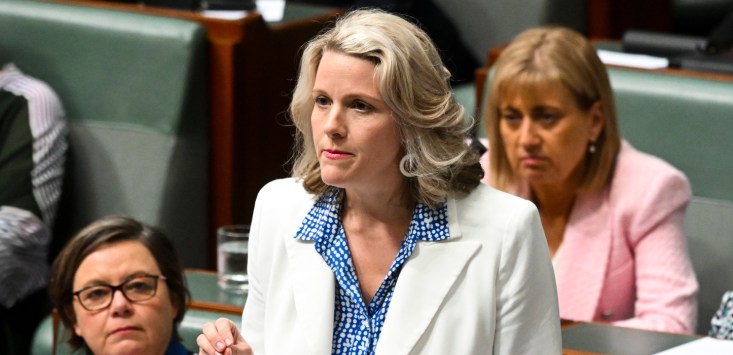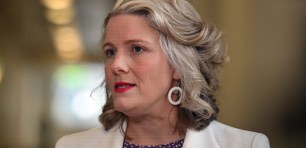
Minister for Home Affairs Clare O'Neil. Source: AAP Image/Lukas Coch
In early May, the Australian Minister for Home Affairs, Clare O’Neil, highlighted Australia’s immigration system is suffering from a decade of breathtaking neglect, and changes are coming to Australia’s skilled migration program. Australia’s immigration program is evolving, and many factors, including economic conditions, global geopolitics, COVID-19 and the growth of different industries, have influenced the changes. This article aims to address the good, the bad, and the ugly of the changes to the Skilled Migration Program, and provide an overview of the program and insights into navigating the changes for employers and visa applicants.
Introduction to changes in Australia’s skilled migrant program
Changes to the skilled migration program are not new. The program is evolving, dynamic and ongoing changes are required to ensure that they meet the needs of the global and local environment, catering to economic conditions, global geopolitics and events such as COVID-19. Reviews and changes take place roughly every five years and changes can be significant, such as when the previous government cut the subclass 457 program and reduced the number of visa classes from roughly 300 to around 120, as we see today.
Our current migration system has become increasingly intricate, which poses a risk of losing our competitive advantage in the global talent market. With over a hundred different visas, complicated regulations, and various requirements, the system has become unnecessarily convoluted and inconsistent across different areas. While some of these measures may be necessary in some instances, they are not universally applicable.
Some of the recently announced changes are welcome, while others have raised concerns among those interested in migrating to Australia.
The good
Employers are currently obligated to advertise a vacant position for at least 28 days. However, some employers find this requirement ineffective in identifying genuine skill shortages. An independent body called Jobs and Skills Australia is being established to address the issue. This body will advise on an approved occupation list catering to the labour market, and workforce training needs as they change. It will eliminate the need for labour market testing, which many employers find cumbersome, especially in industries where chronic skill shortages are well documented. It will also help sponsored workers move more easily between employers, providing greater flexibility.
Skills Australia’s levy, also referred to as a trading surcharge, will now be pro-rated monthly rather than requiring an upfront payment. It’s a significant win for small regional businesses, as paying up to $10,000 upfront for salary and department fees can significantly impact cash flow. Additionally, the refund provisions for refused applications have been limited in the past, with applicants risking losing their total $7,200 fee. This is not only a positive change for cashflow, but also for common sense.
The government has also indicated it will provide clearer pathways to permanent residency for 482 visa holders on the short-term occupation list. The current program has supported a significant population of long-term temporary migrants without a clear pathway to permanent residency, including workers on 457 or 482 student visas. This guest worker visa cohort is at a higher risk of exploitation, and the government’s plan to clear out the backlog and provide pathways to permanent residency is excellent.
Restoring the Working Holiday Maker program to a single working holiday (rather than the current three) and returning to the original intent of “cultural enrichment” for that visa is a positive step towards avoiding exploitation. The elephant in the room will be to determine how the government can open up pathways to permanent residency, whilst simultaneously looking to reduce the overall migration program for permanent visas.
The review also recommends extending the 60-day period for 482 visa holders to find a new sponsor to six months, allowing for greater flexibility and opportunities to find another employer. It should increase compliance and give workers enough time to report exploitation if needed.

Absolute Immigration CEO Jamie Lingham. Source: supplied
The bad
The current Temporary Skilled Migration Income Threshold (TSMIT) for a 482 visa holder is $53,900, which hasn’t changed since 2013 and is correctly being adjusted for inflation. It is concerning the government has set it at $70,000, which may exclude workers in industries like hospitality, aged care, and childcare, who typically don’t reach these higher salary levels. The increase of TSMIT was well-overdue, but perhaps it could have been introduced in 50% increments over two years to soften the impact on sponsors, while also avoiding the risks of inflation that can accompany such a dramatic rise in wages.
The pathway to permanent residency for Temporary Skilled Shortage (TSS) visa holders, is now uncertain, particularly for those on a two-year visa. At the time of writing, the government has not clarified the process, potentially leaving them in limbo.
The ugly: Unintended consequences of the changes
There seems to be an absence of a gradual implementation plan, as many changes are set to take effect by a specific date without any grandfathering mechanism. It could mean that individuals in the middle of their applications may miss out. For instance, the TSMIT adjustment is set to begin on 1 July. Many employers won’t be able to accommodate that increase with such short notice, so their only option will be to withdraw — there are no winners.
Immigration experts should be advocating for our clients in certain areas to prevent them from losing money or having to restart their applications. The industry was successful in lobbying the government when the English language provisions changed in 2007 and can bring a rational voice to the discussion regarding the practical impacts such significant changes can have for employers and the economy.
The consequences for those on a 482 visa for over two years with a salary of $55,000 and applying for permanent residency are unclear, particularly with the TSMIT set at $70,000. It could lead to a mass exodus of skilled and experienced individuals from Australia, or even worse, wage theft, as seen when 7-Eleven had to pay employees $173m in underpaid wages, interest, and superannuation, after franchisees falsified records. The coming months are expected to include transitional arrangements, savings provisions, and hopefully grandfathering provisions to address these uncertainties.
One way to navigate the current uncertainty in the Australian visa program is to become an Accredited Business Sponsor, especially if you have an ongoing application or have been waiting for a long time. Being an accredited sponsor can lead to quick approval of nominations.
The benefit of being an accredited sponsor is that your nomination approval is valid for 12 months. It means that you can use the nomination to apply for the visa at a later stage, providing some certainty and flexibility in the current environment. However, until 30 June, labour market testing remains a critical factor in the process, and it is essential to ensure compliance.
The Australian government plans to increase the number of occupations eligible for visas, but the role of labour agreements in the program is still unclear. Designated Area Migration Agreements (DAMAs) are in place for 12 areas, including Townsville, Cairns, and the Goldfields. However, if the number of DAMAs increases to 25, negotiating multiple labour agreements for businesses operating nationwide could become problematic.
Although this announcement has mostly been positive, it has also caused confusion and concern among certain groups. Until we see the granular detail, it’s hard to know what the fallout will be, but employers and visa applicants should contact their immigration adviser if they have any concerns.
Jamie Lingham is the founder & CEO of Absolute Immigration.
Handpicked for you

Higher wages and monthly visa fees: What small businesses need to know about proposed migration changes



COMMENTS
SmartCompany is committed to hosting lively discussions. Help us keep the conversation useful, interesting and welcoming. We aim to publish comments quickly in the interest of promoting robust conversation, but we’re a small team and we deploy filters to protect against legal risk. Occasionally your comment may be held up while it is being reviewed, but we’re working as fast as we can to keep the conversation rolling.
The SmartCompany comment section is members-only content. Please subscribe to leave a comment.
The SmartCompany comment section is members-only content. Please login to leave a comment.